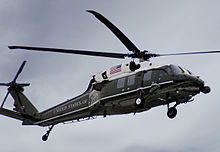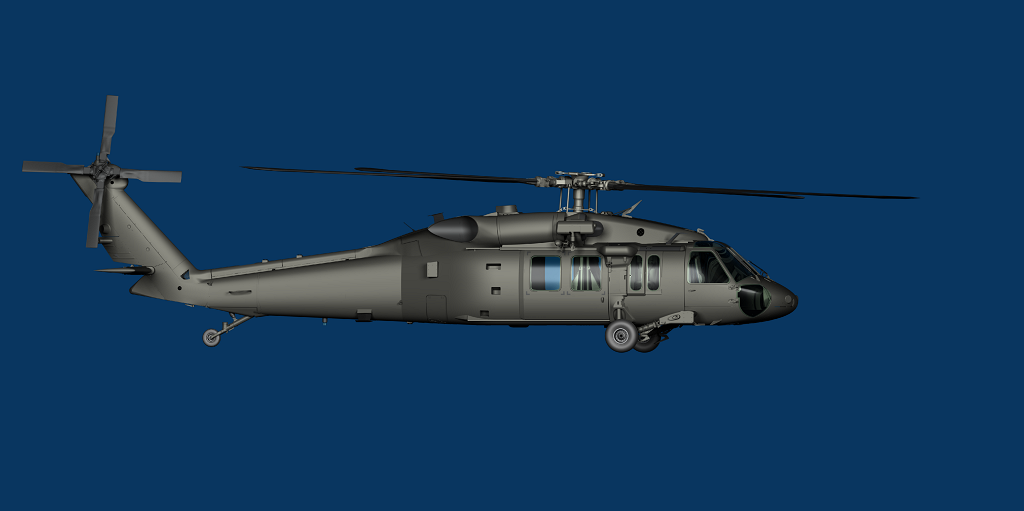Sikorsky S 70: Enhancing Helicopter Performance and Versatility
Sikorsky S 70: Enhancing Helicopter Performance and Versatility
Blog Article
High-Performance Multi-Role Rotorcraft Featuring Advanced Cockpit Technologies and Integrated Sensing Unit Solutions
The realm of rotorcraft technology has actually seen noteworthy advancements in recent times, particularly in the world of high-performance multi-role rotorcraft outfitted with sophisticated cabin modern technologies and flawlessly incorporated sensing unit systems. These developments have not only augmented the functional capacities of rotorcraft however have also significantly influenced modern-day air travel operations on various fronts. From boosted objective flexibility to improved functional effectiveness, the convergence of innovative cabin innovations and integrated sensing unit systems has introduced a new period of possibilities for rotorcraft applications. In the adhering to discussion, we will certainly check out the evolution of rotorcraft modern technology, explore the world of sophisticated cockpit technologies, and analyze the effects of integrated sensing unit systems on the functional adaptability and performance of contemporary rotorcraft.
Advancement of Rotorcraft Technology
The advancement of rotorcraft innovation has been noted by significant advancements in aerodynamics, materials, and propulsion systems, forming the abilities and performance of contemporary rotorcraft. In addition, improvements in propulsion systems, including much more effective engines and ingenious propulsion innovations, have made it possible for rotorcraft to attain higher elevations, faster speeds, and higher hauls.
These improvements have not just changed the abilities of rotorcraft but have actually additionally broadened their applications across numerous sectors, consisting of armed forces, commercial, and emergency situation solutions. The constant evolution of rotorcraft technology proceeds to drive development in the area, pressing the borders of what is possible and forming the future of vertical trip.
Advanced Cabin Innovations
Building upon the fundamental innovations in the rules of aerodynamics, products, and propulsion systems, the realm of rotorcraft modern technology now moves focus towards pioneering Advanced Cockpit Innovations. The assimilation of sophisticated innovations within the cabin environment plays an essential duty in enhancing the operational capacities, security, and efficiency of contemporary rotorcraft. sikorsky s 70. Advanced Cabin Innovations encompass a large range of attributes designed to supply pilots with boosted situational understanding, structured information administration, and instinctive control interfaces
One of the vital developments in cabin layout is the implementation of glass cabins, which change conventional analog determines with high-resolution screens. These electronic systems use customizable designs, real-time data integration, and enhanced readability, making it possible for pilots to accessibility vital details at a look. Progressed avionics systems, such as fly-by-wire controls and increased reality screens, are transforming how pilots connect with the airplane, enabling for specific control and enhanced decision-making capacities.


Integrating sophisticated cockpit innovations not just improves pilot performance yet likewise adds to total objective performance and safety and security in complicated functional settings. By leveraging advanced technologies within the cabin, rotorcraft makers are setting new criteria for operational quality and objective success.
Integrated Sensing Unit Solutions
With the evolution of rotorcraft modern technology, the integration of innovative Integrated Sensor Equipment has actually come to be vital in enhancing functional efficiency and security. These Integrated Sensing unit Systems incorporate a wide variety of technologies that supply crucial information for different functions such as navigation, monitoring, targeting, and environmental surveillance. By perfectly incorporating sensors like radars, cams, lidar, and infrared systems right into rotorcraft, operators can take advantage of boosted situational awareness, improved objective capacities, and reduced pilot workload.
One key benefit of Integrated Sensing unit Systems is their capability to collect real-time information and provide actionable insights to pilots and objective drivers. For instance, advanced radar systems can discover and track targets over fars away, permitting early threat detection and efficient feedback planning. Furthermore, incorporating electro-optical and infrared video cameras allows rotorcraft to perform reconnaissance and security goals with precision and accuracy.
In significance, the assimilation of cutting-edge sensing unit technologies right into rotorcraft not just boosts functional performance yet additionally adds dramatically to total goal success and crew safety and security. As rotorcraft proceed to progress, the role of Integrated Sensing unit Equipment will unquestionably continue to be at the leading edge of innovation in the aerospace market.
Operational Versatility and Performance
Enhancing operational adaptability and effectiveness in rotorcraft is a natural progression from the assimilation of innovative Integrated Sensing unit Equipments. By leveraging the data and insights provided by these sophisticated sensor systems, rotorcraft can enhance their efficiency throughout various missions and environments.
Operational versatility encompasses the ability of rotorcraft to adjust to different roles and circumstances successfully. With innovative cockpit modern technologies and integrated sensor systems, rotorcraft can perfectly transition between tasks such as search and rescue, clinical discharge, monitoring, and extra. This convenience enhances the rotorcraft's ability to fulfill varied functional needs without needing extensive reconfiguration.
Efficiency in rotorcraft procedures is critical for maximizing mission effectiveness and source application. Integrated sensing unit systems play a crucial duty in enhancing functional effectiveness by offering real-time data on weather condition problems, surface mapping, target tracking, and a lot more. This information allows pilots to make educated decisions quickly, optimize flight courses, preserve fuel, useful reference and improve general objective performance.
Influence On Modern Air Travel Procedures

Moreover, the integration of innovative sensors promotes improved goal planning and execution, allowing rotorcraft to perform a wide variety of tasks with improved precision. From search and rescue procedures to aerial firefighting and police missions, the capabilities of modern-day rotorcraft geared up with innovative cockpit modern technologies and incorporated sensing unit systems are unparalleled.
Furthermore, the impact of these developments expands beyond functional performance to cost-effectiveness and sustainability. By visit homepage enhancing trip routes, fuel usage, and upkeep routines, high-performance rotorcraft outfitted with advanced cockpit modern technologies and sensors add to decreasing functional prices and environmental effect, making them indispensable possessions in contemporary aeronautics operations.
Final Thought
In verdict, the high-performance multi-role rotorcraft with advanced cockpit technologies and integrated sensor systems represents a substantial advancement in aviation innovation. These developments enhance operational versatility and effectiveness, inevitably influencing modern-day aeronautics operations in a positive method. The combination of these sophisticated innovations permits improved capabilities and performance in various mission situations, showcasing the continued development of rotorcraft innovation in the aviation industry.
The realm of rotorcraft technology has seen notable advancements in recent times, especially in the realm of high-performance multi-role rotorcraft geared up with advanced cockpit innovations and effortlessly integrated sensor systems. From boosted goal convenience to boosted operational efficiency, the merging of advanced cockpit modern technologies and incorporated sensor systems has ushered in a new period of opportunities for rotorcraft applications. In the complying with see this discussion, we will certainly discover the development of rotorcraft technology, dive into the realm of advanced cabin advancements, and analyze the effects of integrated sensing unit systems on the operational convenience and effectiveness of modern rotorcraft.

Report this page